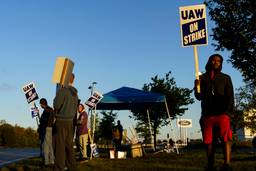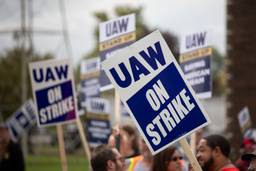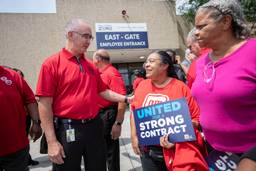A Nationwide UPS Strike Could Be Weeks Away
“[A strike] could capture the imagination of people who want a union, but want to join something that they feel is fighting for them.”
Teddy Ostrow and Ruby Walsh
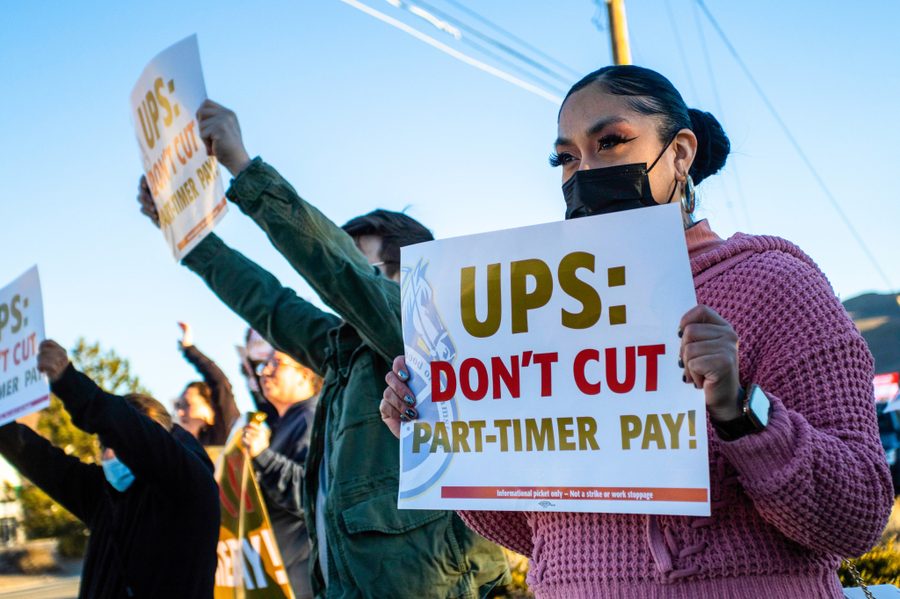
Read the full transcript below.
The word “logistics” has somewhat of an impersonal ring to it. When you hear it, you think: massive container ships, cranes, eighteen wheelers, aircrafts, conveyor belts, spreadsheets, contracts, and of course, boxes.
It’s almost as if all of this infrastructure that moves our goods around the world, around the clock, is running by itself. The wonders of technology.
But undergirding logistics is one indispensable element. Workers. Millions of them, without whom the colossal flow of goods and services on which we’ve grown dependent, would come grinding to a halt.
This transcript has been edited for length and clarity.
Teddy Ostrow: Hello, my name is Teddy Ostrow. Welcome to the Upsurge, a podcast about UPS, the Teamsters, and the future of the American labor movement.
This podcast unpacks the unprecedented labor fight this year at UPS. In July, the contract of over 340,000 UPS workers will expire and if those workers strike, which is a real possibility, it will be the largest strike against a single company in US history.
The Upsurge is produced in partnership with In These Times and The Real News Network. Both are nonprofit media organizations that cover the labor movement closely. Check them out at inthesetimes.com and therealnews.com where you can also find an archive of all our past episodes.
And now for our episodic plea: Please remember, we are an entirely listener-supported podcast. We don’t play ads. We depend on you to keep the show going. So if you like the show, please become a supporter of our Patreon at patreon.com/upsurgepod. You can find the link in the description.
Hairspray for Houston. Dog food for Dallas. Samples to Sydney. A contract for Kansas. Sorting parcels seems so simple. The goods come in, they’re sorted, but then they leave. But when your warehouse is bigger than 90 football fields and you’re handling 2 million packages a day, there’s no room for a snooze at UPS.
You can hear the CNN newscasters’ awe with the truly breathtaking infrastructure of UPS’s Worldport air hub in Louisville, Kentucky.
Assisted by 155 miles of conveyor belt, 20,000 UPSers work here, sorting up to 416,000 packages per hour, loading and unloading trucks and planes at the facility’s 70 aircraft docks, where millions of packages are delivered to more than 220 countries and territories around the world.
The head-spinning operations at Worldport make clear that UPS is not simply a package delivery company, but a multi-national logistics corporation.
Some of us may remember UPS’s ad campaign a decade ago, with the tagline “We Love Logistics”.
In this episode of The Upsurge, we’re zooming out and looking at UPS within a larger process that has occurred over the last several decades: the logistics revolution.
The Teamsters, a union founded in 1903, has come a long way since its humble origins representing workers who drove carriages pulled by teams of horses.
That story is one of gradual but gargantuan changes in the global economy, the “modernization” of production and distribution. That is, a revolution in how goods are transported to markets, and in how goods are then sold to consumers.
But it’s also a story of changes in how workers are organized and managed, by both their unions and their companies.
I could think of no better person to talk about this than Joe Allen, a historian, activist and truck driver who was a UPS Teamster for almost a decade. He is a contributor to the online publication Tempest and the author of The Package King: A Rank-and-File History of the United Parcel Service, published by Haymarket Books.
Now, I just want to say that The Upsurge is seriously indebted to Joe Allen and his work.
So much of my personal learning came from The Package King and from talking with Joe directly. And I know I’m not alone in that.
I really think if you want to understand the importance of the Teamsters’ contract campaign this year, there’s no better work than The Package King. This episode is based on a chapter in the book.
Which is why I was so excited to finally bring Joe on the show to discuss some of the history of UPS as a company, how it fits into this larger logistics revolution in American capitalism, and also how the Teamsters fit into that process too.
As Joe makes clear, the rise of logistics in the global economy has also meant the rise of workers’ potential for wielding serious economic, political and social power. The Teamsters contract campaign is one major juncture on the road to work power.
I hope you’ll learn from Joe as I have.

Teddy Ostrow: Joe Allen, welcome to the Upsurge.
Joe Allen: Thank you. I’m glad to be here.
Teddy Ostrow: You should probably file a grievance against me for not getting you on the show sooner.
Your work has really inspired us and I’m really excited to chat with you on the show. To get started, I’d like to ask a deceivingly simple question. What is logistics? I feel like the pandemic injected this phrase into our psyches, our everyday conversations, as well as the phrase, “supply chain”.
Can you explore that concept for us?
Joe Allen: Well, I think it’s become a buzzword. You know that, on one hand if you say it, it implies that everybody knows what you’re talking about. To some degree, the idea behind it is pretty simple and pretty basic, in its most simple form.
It’s, you know, how do you get goods to consumers; from the plant, the manufacturing facility, to the people who have bought it? That’s still in some sense the basic idea of logistics though, for some people at least, it has a kind of military ring to it.
That’s not an accident. But I think the modern discussion of logistics is on a much grander scale. It means talking about the organization of entire supply chains, which has, you know, occurred for two reasons. One, technological changes: that is, modern air fleets, containerization, the vast expansion of ocean transport, the vast expansion of trucking. All these things come together, but it also means a kind of reorganization of production that allowed for the emergence of these enormous retail giants. Walmart being the kind of trendsetter for this, starting in the late sixties through the seventies, and then becoming a massive corporation during the course of the 1990s, becoming one of the largest private sector employers in the country, which it remains today.
Of course, Amazon, which is both a delivery company and a retail operation. This also applies to the big transportation giants. So, Amazon, Walmart, UPS„ FedEx, DHL, and major post offices in the United States and other countries have emerged as major players and major employers. They sell themselves to major corporations as not just people who just deliver your goods, but they can organize your whole supply chain from where something is manufactured, through how it’s distributed. In the case of the big retail giants over the years, what they’ve tried to do is cut out more and more and more middlemen.
The supply chains themselves have become lean, to use another buzz phrase. They’re exchanged with fewer and fewer hands, and they move quicker and quicker across the globe. It’s clear that the breakdown of global manufacturing and distribution caused by the covid pandemic means that there’s gonna be a reassessing and, and in some sense, we’ve begun to see this reassessing of where production takes place.
So, we’re seeing the reshoring of a lot of manufacturing that used to take place overseas, back in the United States. I think we’re only at the very beginning, but I think we have turned a corner on that.
At the center is the emergence of these huge retail corporations. Walmart, Amazon, Home Depot, Target, and the various transport companies, whether they be UPS, FedEx, DHL, and a whole array of what we call freight.
The industrial working class and the industrial labor movement, which through the late nineties went through these gut-wrenching changes, where unions such as the old Teamsters and the UAW and the steel workers, and you know, related industrial unions who were seen at the heart of the industrial working class really were hollowed out.
Now we’ve seen a kind of regrouping of industrial workers in large workplaces, particularly in the big distribution companies, like Amazon or UPS. So the potential for building a new industrial labor movement is here. The question is, can it be done by the existing unions; do they have to be really changed fundamentally to take advantage of it? Or do we have to create new ones? I think that’s really the big question out there, and I don’t think we have an answer to that yet.
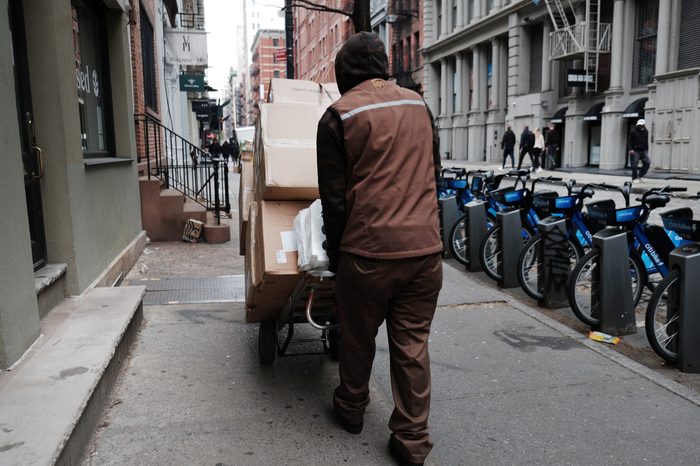
Teddy Ostrow: Part of the goal of this podcast is to unpack what brought us to this moment, when 350,000 Teamsters could shut down a massive pillar of US logistics, UPS and you dove into this history already a little bit. But let’s go back a little bit further in time, and describe this longer process that could be called the logistics revolution.
Can you help us understand what that is? More specifically, how do these courier companies, with an emphasis on UPS, fit into that?
Joe Allen: If you look at UPS, here’s a company that begins in 1907 in Seattle as a bicycle messenger service. So how is it that 125 years later, it’s a global corporation employing half a million workers, that flies to 220 countries and territories a day, and has a massive delivery fleet of 60,000 package cars?
I mean, it has to tell us about something that changed in manufacturing and distribution over the last century. UPS in particular for a long time was a kind of boutique delivery service. It was oriented mostly towards department stores, when people would go in, there was a certain glamor. Part of that was that department stores would wrap your packages and you wouldn’t take them home. And you would be handed off to a UPS, which would then a day or two later deliver these to your home.
That went on for a very long time. And UPS was very good at it. UPS starts out on the West Coast and then in the 1930s makes a leap to New York City. It buys out a lot of local delivery companies, or it just kind of takes over their contracts with many of the big department stores, and that’s what kind of UPS was known for, for the first quarter-century of its existence.
During World War II, the major powers of the world launch a war to see who’s going to be the dominant power, which necessarily requires production, the moving of goods and the moving of armies all across the globe.
This produces a kind of revolution in thinking about the role of distribution and shipping for warfare. You saw some of this during World War I, but it’s on a much grander scale in World War II and afterwards. Much of this new thinking was brought into the business world.
This didn’t all happen overnight. If you go back and look at what the United States looked like at the end of World War II, its ports were pretty backward. There was no GPS, there was no barcode, there were no computers. There was no satellite information system.
Containerization was just a thought in some people’s heads. There was no auto industry on that scale that we saw later; after the war, trucking exploded. So here are parts of the puzzle working their way towards a common goal, but in a very jerky fashion.
It’s really in the 1960s and 1970s that some of the technological changes; the growth of an interstate highway system, this new level of air and ocean transport, create the possibility of reorganizing production on both a global scale, and quickening the pace of getting goods from the plants and manufacturing facilities into the hands of consumers.
In a lot of ways, Walmart becomes the model for that. Sam Walton took what was a fairly small regional company and turned it into a massive American-style, corporate entity, cutting out the middlemen so that he could sell products as cheaply as possible.
He became very successful at that. That was later taken over and extended on a different level by Amazon. During this time, UPS goes from being a boutique delivery service to slowly but surely becoming a 48 and then 50-state corporation.
Because remember, one of the things about the New Deal is that it tightly regulated the trucking industry for a period of 40 years. It, microscopically, organized the industry which created both stable jobs, and it was something that the Teamsters Union relied upon. It created a stable industry and allowed them to grow, to be really the dominant force in the trucking industry.
They had 2 million members about the late sixties, early seventies. Most trucking companies were tiny compared to it. But underneath this surface, there are the things you see, the things you partially see, and the much bigger historical forces that you don’t really see in the background, but are animating something else that’s gonna produce a big change.
During the 1960s, the Teamsters reached the height of their bargaining power under Hoffa, with the National Master Freight Agreement. And UPS is still a growing company, but on the edge of the freight industry, underneath all that, there are these big changes going on, that the union’s partially aware of, but partially ignoring at the same time.
During the course of the 1970s and 1980s, there’s a big push to deregulate the trucking industry. UPS had become known as the quiet giant of the freight industry. It explodes from the late sixties, employing about a hundred thousand people to by late 1990s employing nearly 200,000.
One of the things that makes UPS different is that it had a fairly uniform system of what it took for packages, what were called parcel post, but they had a national system for bringing them in, distributing them, and so forth.
It was a very streamlined, very focused business, and they did it very well. They basically created a situation where they were one of the major benefactors from deregulation of the industry. At the same time, what made them an anomaly is that they were a union company.
Most of the modern big transport and retail companies are non-union. The older logistics, industry, rail, are union. They’re highly regulated, but they’re union. Most of the current modern ones are non-union. So UPS inhabits this kind of odd space of both being one of the great benefactors of deregulation and being a unionized company at the same time.
What this means politically is that within the Teamsters, they’ve become a kind of union within a union. Right now they make up anywhere from 330,000 to 350,000 members, depending on seasonal fluctuation.The Teamsters have about 1.2 million members, so over a quarter of the union are UPSers. Even though the Teamsters have national contracts with other trucking companies, there’s nothing that compares to the size and importance of UPS.
So they’ve become heavily dependent on it and through most of their recent history, unfortunately, the Teamsters have had a cooperative relationship with the company. In exchange for concessions — for example, the difference between the pay for part-timers and full-timers; where part-timers still make up nearly two-thirds of the workforce — they’ve helped subsidize the massive growth of UPS, at every stage of the way during its modern history. From the 1980s onward, really quite at the expense particularly of part-timers in terms of wages, but also in terms of the working conditions that whether you’re full-time or or part-time are quite horrendous and exploitative.
During this time, we’ve seen this kind of retail revolution. We’ve seen a logistics revolution. We’ve also seen something of a revolution in labor relations where the Teamsters have both declined in terms of their presence overall, but have grown more dependent on UPS to be a viable national union, which creates all sorts of contradictory pressures.

Teddy Ostrow: That’s a really good point, and I want to dig more into the Teamsters in a few minutes. But first, you sort of began to mention this: what has the pandemic done for UPS? I think also this may be a good time to bring in the question of how Amazon fits into this landscape.
Joe Allen: I think one thing that the pandemic did was accelerate trends that already existed. On a global scale, it accelerated the rivalry between the United States and China in particular.
Since 2018, and this obviously accelerated during the pandemic, both Amazon and UPS — and I’m sure this is true of FedEx — their workforces have substantially expanded.
During the first year of the pandemic especially, but I think it’s been true overall, more people were at home and they had to order online for the things that they would have previously gone to local shops or department stores or supermarkets to get.
Even companies like Walmart, Target and others, who still have a substantial brick and mortar presence, had to shift towards making more and more home deliveries of their products. I think since 2018, UPS claims that they’ve put on 50,000 more workers, most of whom are Teamster members. At the same time, we should recognize that at both Amazon and UPS, the turnover rate, particularly among part-timers, is incredible. There are some estimates that if you look at it annually, there’s something like a 90% turnover rate. As somebody who was around the 1997 strike and has written about it, when the union achieved a hands-down victory, creating 10,000 new jobs out of existing part-time positions…if you were to tell me 25 years later, that the model for the logistics industry was a 90% annual turnover rate, I wouldn’t have believed you. And yet they’ve been able to do that and sustain that model for all these years, and that creates real organizing problems, whether it’s Amazon or organizing an existing union workforce like UPS. If you have so many people who leave on such a constant basis, that creates a very difficult situation for organizing.
Teddy Ostrow: I think in general when we think about logistics, you get the sense that these processes of moving things around the world are almost automated. You know, everything’s on a belt sorted by machines, but people or labor, does have an enormous role in this that you’ve touched on. How does labor fit into this process that you’ve been describing over the last hundred years, and specifically how do the Teamsters fit into it?
Joe Allen: I think in general, people who see themselves as socialists or labor activists shouldn’t fear technology because technology should always be used to do away with the most dangerous of work, to do away with drudgery, things that could lead to illness or injury.
That’s the promise of technology. Of course, the problem is that in the hands of the capitalist class, it’s used for increasing exploitation and surveillance. For most people, every time you hear technology, it either means I’m gonna lose a job or I’m just gonna get screwed over more and more.
When you look back over the last 100 years, there’s a couple of things to keep in mind. While technology can be devastating in particular fields like the mining industry, much of the talk of technology just wiping out whole workforces has really proven not to be true.
Overall what we see is that workers are more important than ever before. It’s not really about technology replacing workers, it’s about technology being used to exploit people more and more. Whether you are a UPS driver or a package car driver doing a pickup, it goes into a warehouse where they have to be unloaded by people unloading trucks to people who are sorters, who are then sorting them into trailers for another hub. Or they’re being sorted to be loaded onto trucks, which then have to be driven out by drivers who have to hand them to businesses and workers.
So, workers are still absolutely essential to the system. One of the things that UPS tries to do is to try to introduce as much technology as possible to minimize the amount of hands on packages. When you look back to 1968, UPS delivered more parcel posts in the post office. They had about a hundred thousand employees at the time when Ron Carey led the strike against UPS. In 1997, 185,000 Teamsters went out on strike.
Here we are, 25 years later, and despite all the talk of technology replacing workers, there are something like 330,000 to 350,000 workers who are members of the Teamster Union at UPS. The power of workers to shut down UPS has been demonstrated, though it has been muted and underused since. We’ll see come July 31st whether it’s used for the first time in the modern history of UPS.
Teddy Ostrow: Well, let’s bring the conversation more specifically now to the UPS Teamsters contract campaign. I’ve asked a couple times on this show, what a teamsters strike would mean for the broader labor movement, and I’d like to ask you the same question, but perhaps you can emphasize why it’s so significant that this is happening or could happen in the logistics industry.
What are the potentials we’re seeing here?
Joe Allen: The national contract between the Teamsters and UPS doesn’t end until July 31st. We won’t really know until mid July where things are at, but I think there’s obviously a different model that UPS wants to impose on its workforce, that the teams rightly are resisting.
People call it Uberization, or the digitizing of the UPS workforce, they want a much more casual workforce. Something that doesn’t have what the heart and guts of the union are, particularly package car drivers who have fairly well defined wages and benefits and working schedules.
The Hoffa administration last time around made a series of concessions about creating a lower tier full-time package car driver and several other concessions about personal vehicles and contingent workers during some parts of the year that rightly inflamed a lot of people, which is why the contract was voted down, but then undemocratically imposed on the membership.
UPS is a very important corporation because on a daily basis, it moves something like two to 3% of the global economy. FedEx does a similar amount. So these are really important corporations.
UPS was a trendsetter in labor relations, both in terms of its repressive culture and the concessions wrangled out of the Teamsters in the early 1980s. UPS today is so ubiquitous, it’s hard to think of a country without it.
It is just present and necessary for so many people. Under Hoffa, you went from kind of a high point of the Teamsters in 1997, where Ron Carey was the leader of this reform movement, this big strike that seemed to herald the rebirth of the American labor movement, and then found himself witch hunted out of the union. In this almost semi-coup, the federal government helped bring Jim Hoffa to power; the Teamsters then sunk back into this very predictable and languishing position for two decades. So the last couple of years, one of the things the pandemic produced was that these workers were absolutely essential, particularly industrial workers and truck drivers.
We’ve seen something of a strike wave in industrial America starting about two years ago. The Old Guard leadership split and Sean O’Brien and Fred Zuckerman came to power with a promise of a change in the fundamental direction of the Teamsters. The Teamsters are both important in terms of what they are as a union, but they’re also kind of culturally important.
Sometimes not for the best of reasons, in terms of Hollywood movies and films, but everybody knows the Teamsters. It’s hard to find someone who goes, I don’t know anything about the Teamsters. I mean, everybody knows something about the Teamsters.
So a strike at UPS not only has the potential of putting into motion something like 340,000 workers, and shutting down a very important corporation. It has the possibility of elevating the struggles that we’ve already begun to see throughout the industrial sector of the economy and some of the new organizing and the possibility of injecting that spirit and organizing into the larger non-union sector of the logistics industry, most notably Amazon.
We shouldn’t forget about FedEx and a lot of the big major trucking companies. I think people tend to be attracted not necessarily to the specifics of any contract settlement, because, you know, companies can be very different in terms of job classifications and pay; what they’re attracted to is a sense that there’s a union that’s fighting and moving forward.
So if we do see the type of struggle that could take place — and I still lean towards there being a strike right now — it could capture the imagination of people who want a union, but want to join something that they feel is fighting for them.
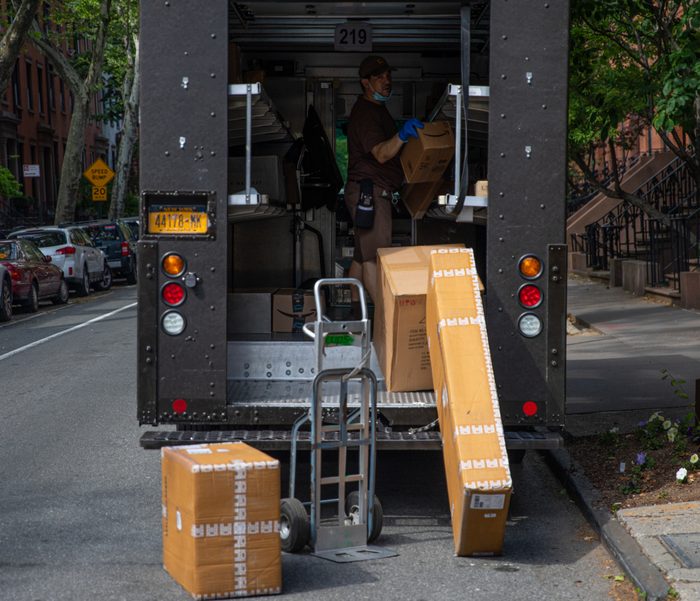
Teddy Ostrow: I think we all agree that a Teamster victory at UPS would be pretty huge. But looking beyond the Teamsters, what do you think is needed? To expand organizing and to build power in that industry, including on the rails and the air, on the docks, just across logistics.
Joe Allen: I think one of the things about the rail contract dispute last fall is that, for the first time, at least in my political life, discussions of the conditions in the rail industry were national news for several months.
That was extraordinary in and of itself. Part of that was because the working conditions of rail workers were shocking to most people because if there’s one industry in the country that’s had unions for over a hundred years, it’s the rail industry. I myself found it shocking.
But it also goes to show you that the labor laws that existed in this country, specifically the Railway Labor Act, but this is also true of Taft Hartley, which governs most of the private sector, is highly repressive. And really, it’s used to squash the fights that we need to make things better.
But we’re not gonna get real labor law reform until we have millions of more workers who are not only in unions, but are also prepared to fight for that type of political agenda. I keep coming back to some of the lessons from the 1930s and the 1970s. There’s always gonna be sentiment to fight, and we’ll always see workers prepared to kind of take action to do stuff, but we also need people with radical politics who have a broader vision of how to shape the labor movement and move it forward and to overcome a lot of the divisions that exist within the movement.
One of the reasons why UPS has been so successful over the decades, has been able to push through a lot of these concessions, is not just having a compliant leadership, but having a highly divided membership, There are few workplaces, particularly a unionized workplace like UPS, where you have on one hand extremely, highly paid feeder drivers, the best working conditions you can get as a truck driver, through a myriad of jobs down to the lowliest part-timer, unloading trucks in the middle of the night, in the middle of nowhere. Trying to bring that kind of highly divided, very disparate workforce where issues of race and gender and immigration status intersect, and weave through all these issues into one group of people who can fight around common demands is not an easy task. It was achieved in 1997. We need it to happen now, but that just reflects the broader divisions that exist within the American working class in any major industry, in any major trucking or transport company.
We need people who have a political vision of that. A labor movement is not just about wages and working conditions, but it’s also about fighting racism and sexism and fighting against anti-immigrant bigotry or transphobia. Those are the things that divide, or potentially can unite workers on a daily basis in a workplace. That lack of imagination, that lack of politics is still kind of marginal to the labor movement, and I think that’s one of the things that has to change.
*
Teddy Ostrow: What didn’t make it into this episode, but I think is important to note, is that there are complicated and contradictory relationships between all of the logistics giants mentioned in this episode. For example, UPS and Amazon both rely heavily on the US Postal Service to deliver a large number of their products, in many ways exploiting a beloved public institution that has suffered political attack over the decades, which has created the opportunity for these private companies to expand so rapidly.
Meanwhile, Amazon is UPS’s biggest customer. UPS delivers a huge portion of Amazon parcels, even as it fears the exponential growth of Amazon’s own delivery infrastructure. So while there’s competition between these companies, Joe emphasized that there’s also significant cooperation.
Because of that, workers at each stop on the supply chain, at each logistics pillar, have remarkable leverage against the whole system. The power of these workers is immense and right now we are watching how the Teamsters will choose to wield it.
Hosted and edited by Teddy Ostrow
Produced by NYGP & Ruby Walsh, in partnership with In These Times & The Real News
Music by Casey Gallagher
Cover art by Devlin Claro Resetar
**
Support the show at Patreon.com/upsurgepod.
Follow us on Twitter @upsurgepod, Facebook, The Upsurge, and YouTube @upsurgepod.
Teddy Ostrow is a journalist from Brooklyn covering labor and economics. He is the host of The Upsurge podcast and his work has appeared in The Nation, The New Republic, and elsewhere. Follow him on Twitter @TeddyOstrow.
Ruby Walsh is an audio producer from Brooklyn. She is a co-producer of The Upsurge podcast and a development producer for Giant Grin LLC. Formerly, she was the associate producer of Moyers on Democracy and wrote for BillMoyers.com.


